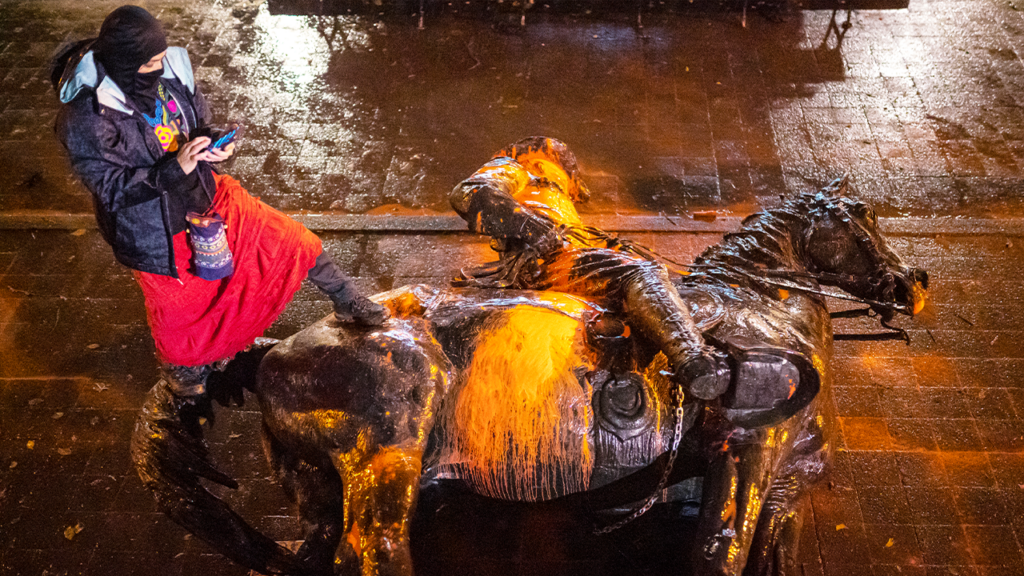In a significant development for Portland, the statues of Presidents Abraham Lincoln and Theodore Roosevelt are set to be reinstated in the city’s South Park Blocks following extensive public discussions. These monuments were removed five years ago during protests marking the “Indigenous Peoples Day of Rage.” The decision to return these historical markers emerged from a community engagement process where diverse opinions were expressed regarding their relevance and historical context.
| Article Subheadings |
|---|
| 1) The Background of the Monuments |
| 2) Community Engagement and Public Opinions |
| 3) The Future of Historical Context |
| 4) Plans for Reinstallation Timelines |
| 5) Implications for Portland’s Cultural Landscape |
The Background of the Monuments
The statues of Abraham Lincoln and Theodore Roosevelt were originally erected as symbols of leadership and historical significance in the development of the United States. However, during the protests in October 2020, which were a reaction to various social injustices, these statues were targeted by demonstrators who viewed them as representations of oppression, particularly regarding Indigenous peoples and people of color. This moment marked a significant shift in public perception surrounding these monuments and has prompted ongoing debate about their place in contemporary society.
Community Engagement and Public Opinions
The City of Portland initiated a series of public discussions where community members voiced a range of feelings about the statues’ return. Some residents argued vehemently for the reinstatement of the monuments, emphasizing their historical importance. One participant stated,
“We want them back because anarchists illegally took them down.”
Conversely, others raised concerns regarding the implications of such reinstatements, calling for a broader conversation about the contextualization of these monuments in today’s society. A resident remarked that rather than simply returning the statues as is, there should be an “elevated conversation” on how they can be “contextualized for today’s audience.”
The Future of Historical Context
A notable aspect of the public discussions revolved around the idea of recontextualization. Many community members advocated for a comprehensive narrative to accompany the monuments that provides a more nuanced view of the figures they represent. Deb Elliott, a professor from Portland State University, remarked that one group of attendees sought to include a complete narrative surrounding the historical significance—and impact—of the figures, while another group simply wanted the monuments restored to their original status. This indicates a divided community that reflects broader national conversations regarding historical memory and social justice.
Plans for Reinstallation Timelines
With the public sentiment leaning towards the reinstatement of these monuments, plans have been set in motion. The Lincoln statue is anticipated to be reinstalled in early 2026, followed by the reinstatement of the Roosevelt statue about a year later. This timeline reflects the city’s commitment to honoring community desires while ensuring the process is handled with care and sensitivity to the values of its residents. The decision to publicly engage the community throughout this process marks a significant step towards building trust between the citizens and the city council.
Implications for Portland’s Cultural Landscape
The reinstatement of these statues holds broader implications for Portland’s identity as a city that grapples with its history and seeks to reconcile past injustices. As the community continues to express differing views, the statues serve as focal points for ongoing discussions about race, history, and representation in public spaces. One resident noted that the crowd which tore down the monuments does not “represent Portland,” signaling a desire for inclusive dialogue about the city’s past and future. This situation can act as a precedent for how communities address historical symbols and their relevance in diverse societies.
| No. | Key Points |
|---|---|
| 1 | The statues of Lincoln and Roosevelt were toppled during the “Indigenous Peoples Day of Rage” protests in 2020. |
| 2 | A series of public sessions revealed differing community opinions on the statues’ return. |
| 3 | Debate focused not only on their reinstatement but also on their historical contextualization. |
| 4 | Plans are in place to reinstall Lincoln’s statue by early 2026 and Roosevelt’s by 2027. |
| 5 | The situation reflects broader societal discussions about race, history, and representation. |
Summary
The decision to reinstate the statues of Abraham Lincoln and Theodore Roosevelt in Portland marks an important chapter in the city’s ongoing conversation regarding historical representation and social justice. As the community navigates its collective memory, the reinstatement of these monuments presents opportunities for dialogue and recontextualization, ultimately shaping Portland’s cultural landscape for years to come.
Frequently Asked Questions
Question: Why were the Lincoln and Roosevelt statues removed?
The statues were removed during the “Indigenous Peoples Day of Rage” protests in October 2020 as activists sought to challenge symbols they viewed as representing historical oppression.
Question: What was the community’s response to the proposed reinstatement?
Community responses were mixed, with some residents advocating for the statues’ return, arguing for historical significance, while others called for discussions on how to contextualize their meanings for contemporary audiences.
Question: When is the expected timeline for the statues’ return?
The Lincoln statue is expected to be reinstated by early 2026, with the Roosevelt statue following about a year later.
